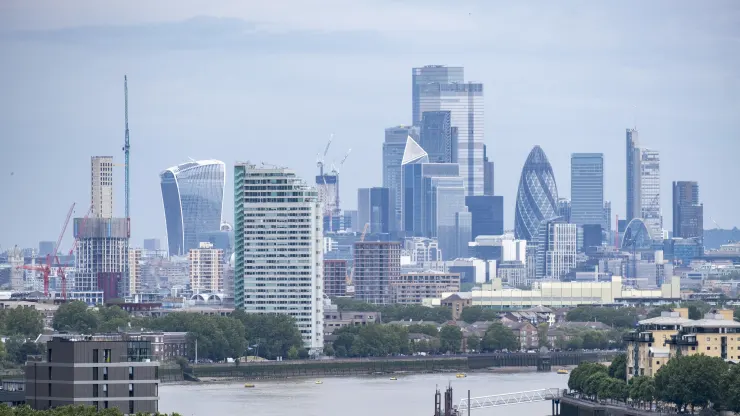Straight from the Desk
Syz the moment
Live feeds, charts, breaking stories, all day long.
- All
- us
- equities
- Food for Thoughts
- macro
- sp500
- Bonds
- Asia
- bitcoin
- Central banks
- markets
- technical analysis
- investing
- inflation
- europe
- Crypto
- interest-rates
- Commodities
- geopolitics
- performance
- gold
- ETF
- nvidia
- tech
- AI
- earnings
- Forex
- Real Estate
- oil
- bank
- FederalReserve
- Volatility
- apple
- nasdaq
- emerging-markets
- magnificent-7
- energy
- Alternatives
- switzerland
- trading
- tesla
- sentiment
- Money Market
- russia
- France
- assetmanagement
- ESG
- Middle East
- UK
- china
- amazon
- ethereum
- microsoft
- meta
- bankruptcy
- Industrial-production
- Turkey
- Healthcare
- Global Markets Outlook
- recession
- africa
- brics
- Market Outlook
- Yields
- Focus
- shipping
- wages
Why a "hawkish hold" by the Fed remains a high probability outcome.
The bar for the Fed to start cutting interest rates is high. It is also worthwhile to remember that Powell job remains a difficult one in light of what has been taking place since the start of the hiking rates cycle and more recently. Indeed, 1) the unemployment rate is exactly where it was when the Fed started hiking last March...(hot job market = wage pressure =higher inflation) - see UPPER CHART BELOW 2) Financial conditions are now far easier than where they were last September... 3) The S&P 500 is back where it was just as the Fed started hiking - see LOWER CHART 4) Meanwhile, commodity prices are starting to ramp up, which could add upward pressure on headline inflation. Bottom line: while markets expect rate cuts to soon follow due to cooling inflation, there is a very decent probability that the Fed might be forced holding tight. Source: Bloomberg, www.zerohedge.com
Hungary still has an inflation rate of >20%, highest inflation rate in entire EU.
Inflation is driven by food prices (Food CPI +29% YoY) as Hungary has been hit by a drought and this has caused prices to rise. In addition, there is a shortage on the labor market, low labor productivity & very expansionary macroeconomic policies. Source: Bloomberg, HolgerZ
Fun fact is that Japanese inflation is now higher than that in the US for the first time since October 2015.
Source: Bloomberg, www.zerohedge.com
Probability of a Fed rate hike next week is approaching 100%.
Done deal. Source: Charlie Biello
The cost of cooking a classic Pizza Margherita in Italy continues to rise as olive oil prices soar.
Rise in cost of ingredients to make pizza outpaces inflation. Bloomberg custom index shows olive oil price up almost 27%. Source: Bloomberg, HolgerZ
U.K. inflation cooled significantly in June, coming in below consensus expectations at 7.9% annually
Economists polled by Reuters had projected an annual rise in the headline consumer price index of 8.2%, following May’s hotter-than-expected 8.7% reading, but annualized price rises continue to run well above the Bank of England’s 2% target. On a monthly basis, headline CPI increased by 0.1%, below a consensus forecast of 0.4%. Core inflation — which excludes volatile energy, food, alcohol and tobacco prices — remained sticky at an annualized 6.9%, but fell from a 31-year high of 7.1% in May. Source: CNBC
The Three Inflationary Waves of the 1970s
As highlighted by Tavi Costa / Crescat Capital, inflation tends to develop through waves. Just as base effects played a crucial role in reducing inflation rates so far this year, it does not mean that CPI might reach and stay at a low level. Indeed, while the macro environment today differs from that of the 1970s or 1940s, there are some underlying issues which could continue to drive inflation rates higher: ▪️ Irresponsible levels of government spending ▪️ Escalating deglobalization trends, which necessitate the revitalization of manufacturing capabilities in economies. ▪️ Wage-price spiral, particularly driven by low-income segments of the society ▪️ Ongoing supply constraints due to chronic
After adjusting for inflation, US Retail Sales fell 2.5% over the last year, the 8th consecutive YoY decline.
That's the longest down streak since 2009. Nominal retail sales increased 0.5% YoY vs. historical average of 4.7%. Source: Charlie Bilello
Investing with intelligence
Our latest research, commentary and market outlooks



